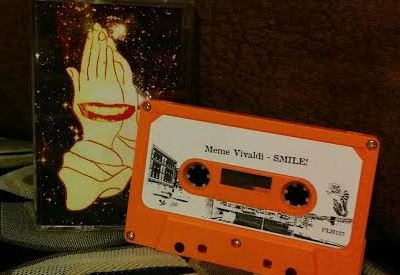by Dustin

Ever since we decided to revitalize the Collector’s Corner series of articles back in January, I’ve been racking my brain in an attempt to decide on the next album to showcase. I quite enjoy being able to talk about some of my favorite releases more casually and personally, as opposed to the formal nature of music reviews; however, physical media is not always the most interesting thing in the world. I adore my music collection, and have a bad tendency to put disposable income I don’t actually have into it. Regardless of this, many of the titles I own could be described in a paragraph or less. This simplicity is a wonderful thing, but at the same time it doesn’t make for the most catching of blog posts; however, Rajin recently published his own collectors corner, reminding me not to neglect this particular series. Being the stubborn person I am, I figured the best way to break the slump would be to write about one of the most simplistic releases I own. This may sound counterintuitive, but due to the album’s stature within hip-hop and grandiose sound I actually find the stark contrast quite interesting.
The album in question is Madvillainy, the collaborative effort between underground legends MF DOOM and Madlib under the name Madvillain. The particular version we will be looking at is the cassette re-release which came out under Stones Throw Records (STH2065) in 2014. This is the standard release, which has some minor changes from the Cassette Store Day release though they share the same catalogue number. The biggest variation is that the Cassette Store Day release has a shiny j-card rather than matte.

Upon first look at this cassette it is evident that a few minor design changes were made to the original cover in order to have it look natural on a j-card. The text from the upper left corner has been removed entirely, and the orange square on the right has been trimmed into a much smaller strip. These alterations don’t take much away from the artwork, and in my opinion Stones Throw did an excellent job reformatting everything. One weird difference, however, is that the signature cover photo of DOOM appears to be slightly darker than on the original. This could just be an illusion due to the fact that his shoulders have been cut out, but it stood out as slightly odd to me. Ultimately it doesn’t really matter, as the album artwork is classic and looks just about as good here as it has anywhere else. I’ve seen cassette release adaptations go really poorly, and fortunately Madvillainy is not one of those cases.
The rest of the j-card is also quite minimalistic. Taking a look at the side spine you’ll find the album name and not much else. Around the back it simply says that group is called Madvillain, Madlib did the beats, DOOM did the emceeing, and Stones Throw released the record (in addition to the catalogue number). This serves as the credits portion of the release, weighing in at a whopping eight words. The interior of the j-card has a black and white photo of Madlib with his face partially obscured by a piece of production equipment. That is essentially all there is to see as far as the external packaging goes. It’s basic, but it looks great.

The cassette itself seems barren (even under-designed) at first, but after taking a closer look at it I realized it is actually quite the unique piece. The tape is housed inside a colourless clear shell with black liners, which in itself does not sound like anything particularly out of the ordinary. If you take a closer look at the liner though, there is a triangular notch cut out of the top which is a shape that I have never personally seen on a cassette before. The black liner is also being used to provide a contrasting backdrop to the white text stamped on both sides of the outer shell, and makes the font pop excellently. It’s a very small design choice, but it adds a sense of flair that would not have otherwise been there. I personally adore it.
The sound quality is about as good as you’re going to get from a cassette, which still isn’t amazing, but it’s certainly passable. I noticed relatively little background hiss, which doesn’t seem to be a frequent issue on newer cassettes anyway. The quality control is appreciated nonetheless.
To summarize, the 2014 cassette reissue of Madvillainy is an exercise in minimalism done correctly. The aesthetic offers few clues as to how the album is going to sound, yet it also compliments the music very well. This particular album always seemed to suit the vinyl format the most, but I will say that I was pleasantly surprised with the cassette. If you’re interested in picking up one of the many reissues (as of right now Discogs lists 23 versions) of Madvillainy, I would most certainly say that you can’t go wrong with this tape.









